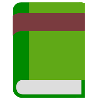The Difference in Students’ Learning Outcomes Using Problem-Based Learning and Project-Based Learning on The Concept of Vibrations and Waves
Sari
Kata Kunci
Teks Lengkap:
PDFReferensi
Ahmad, A., Hajar, S., & Almu, F. F. (2018). Peningkatan keterampilan menyimak cerita anak melalui media animasi audio visual siswa kelas VI SD. Jurnal Ilmiah Profesi Pendidikan, 3(1). https://doi.org/10.29303/jipp.v3i1.44
Asriningsih, N. W. N., Sujana, I. W., & Sri Darmawati, I. G. A. P. (2021). Penerapan model discovery learning berbantuan media powerpoint meningkatkan hasil belajar ips siswa SD. Mimbar Ilmu, 26(2), 251. https://doi.org/10.23887/mi.v26i2.36202
Candra L. N. P. (2018). Penerapan model pembelajaran kooperatif tipe NHT berbantuan media audio visual untuk meningkatkan hasil belajar IPA. Journal of Education Action Research, 2(4), 355. https://doi.org/10.23887/jear.v2i4.16331
Hake, R. R. (1998). Interactive-engagement versus traditional methods: A six-thousand-student survey of mechanics test data for introductory physics courses. American journal of Physics, 66(1), 64-74.
Hastuti, A., & Budianti, Y. (2014). Pengaruh penggunaan media audio visual terhadap hasil belajar siswa pada mata pelajaran ipa kelas ii sdn bantargebang ii kota bekasi. Jurnal Pedagogik, 2(2), 33–38.
Hutasoit, D. K., Hasanah, L. W., Lubis, M., & Puspita, R. (2024). Media dan Teknologi Pembelajaran PPKn dalam Memenuhi Tujuan dan Fungsi Pendidikan Kewarganegaraan.
Izzaty, R. E., Ayriza, Y., Setiawati, F. A., & Amalia, R. N. (2017). Prediktor prestasi belajar siswa kelas 1 sekolah dasar. Jurnal Psikologi, 44(2), 153. https://doi.org/10.22146/jpsi.27454
Lestari, I., & Juanda, R. (2019). Komparasi model pembelajaran problem based learning dan project based learning terhadap hasil belajar siswa pada materi perangkat keras jaringan internet kelas IX SMP negeri 5 sungai kakap kabupaten kubu raya. Efektor, 6(2), 127–135. http://ojs.unpkediri.ac.id/index.php/efektor-ehttps://doi.org/10.29407/e.v6i2.13159://creativecommons.org/licenses/by-sa/4.0/
Mahmud, A. F., Buaja, T., & Noh, S. A. (2018). Problem-based learning model applied: Enhancing the first grade students’ english achievement at muhammadiyah islamic school kota ternate. International Journal of Scientific and Technology Research, 7(12), 270–272.
Margareta, J. (2023). Pengembangan Media Pembelajaran Ipa Berbasis Games Untuk Siswa Kelas 5 Sd. 6, 954–958.
Marinda, F., Muhammad, N., & Saprudin, S. (2023). Pengembangan konten e-modul interaktif materi getaran dan gelombang berbasis problem based learning. JPF (Jurnal Pendidikan Fisika) FKIP UM Metro, 11(1), 94-107.
Mellisa, M., & Yanda, Y. D. (2019). Developing audio-visual learning media based on video documentary on tissue culture explant of Dendrobium bigibbum. JPBI (Jurnal Pendidikan Biologi Indonesia), 5(3), 379–386. https://doi.org/10.22219/jpbi.v5i3.9993
Rahmawati, B. F., Badarudin, B., & Hadi, M. S. (2020). Penggunaan media interaktif power point dalam pembelajaran daring. Fajar Historia: Jurnal Ilmu Sejarah Dan Pendidikan, 4(2), 60–67. https://doi.org/10.29408/fhs.v4i2.3135
Sahjat, S., & Buaja, T. (2017). Penerapan metode quantum learning untuk meningkatkan hasil belajar mata pelajaran IPA pada siswa kelas IV SD negeri 1 daruba morotai selatan. Jurnal Pendidikan Mipa, 1(12), 81–87. http://lib.unnes.ac.id/1261/
Sani, R. A. (2014). Pembelajaran Saintifik untuk Implementasi Kurikulum 2013. Jakarta: PT Bumi Aksara.
Saprudin, S., Liliasari, L., Setiawan, A., & Prihatmanto, A. (2020). Optical gamification (OG); Serial versus random model to improve pre-service physics teachers’ concept mastery. International Journal of Emerging Technologies in Learning (IJET), 15(9), 39-59.
Saprudin, S., Januarsih, M. S., Rahman, N. A., & Rizal, R. (2023). Digital game to support the effectiveness of using interactive e-module on vibration and waves concept (IeMVWC). Techno: Jurnal Penelitian, 12(1), 46-55.
Saprudin, S., Ahlak, I., Salim, A., Haerullah, A. H., Hamid, F., & Rahman, N. A. (2022). Pengembangan e-modul interaktif getaran dan gelombang (EMIGG) untuk pembelajaran ipa di smp. Jurnal Pendidikan MIPA, 12(1), 97-106.
Taslim B, et al. (2022). Penggunaan media animasi audio visual untuk meningkatkan hasil belajar IPA di SD negeri 2 kota ternate. Attractive : Innovative Education Journal Vol. 6, No. 3, November 2024 ISSN : 2685-6085.
Wiersma, W & Jurs,S. G. (2009). Research Methods in Education an introduction Ninth Edition. United States of America: Pearson Education, Inc.
DOI: https://doi.org/10.33387/j.edu.v23i1.9696
Refbacks
- Saat ini tidak ada refbacks.
| Journal Name | Jurnal Edukasi |
| Print ISSN | 1978-6115 |
| Elektronik ISSN | 2597-9213 |
| Publisher | Fakultas Keguruan dan Ilmu Pendidikan (FKIP) Universitas Khairun |
| Address | Jalan Bandara Sultan Baabullah Kampus I Unkhair, Kelurahan Akehuda, 97728 Kecamatan Kota Ternate Utara, Provinsi Maluku Utara |
| Country | Indonesia |
| j.edukasi@unkhair.ac.id / edukasi2019@gmail.com | |
| URL | https://ejournal.unkhair.ac.id/index.php/edu/index |
| DOI | http://doi.org/10.33387/edu |
Indexed By:
-----------------------------------------------------------------------------------------------------------------------------------------------------------------------------

EDUKASI is licensed under a‚ Creative Commons Attribution-NonCommercial 4.0 International License.













